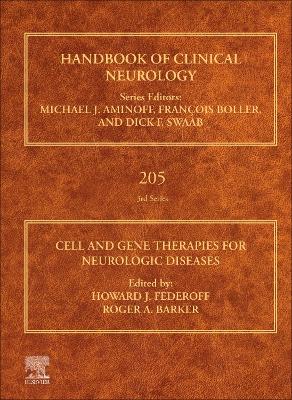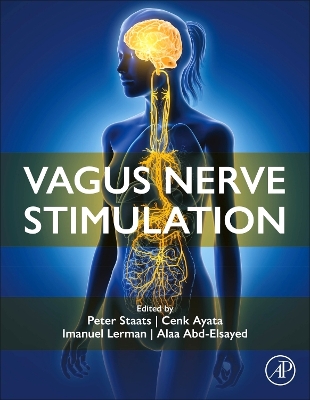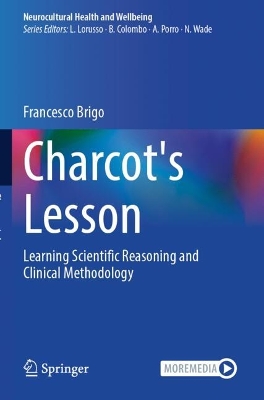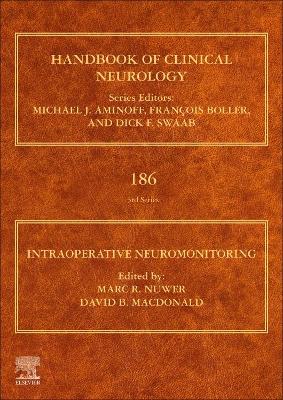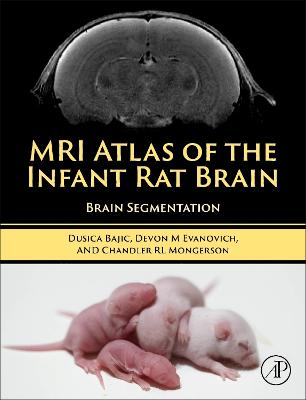Neural Repair and Regeneration after Spinal Cord Injury and Spine Trauma
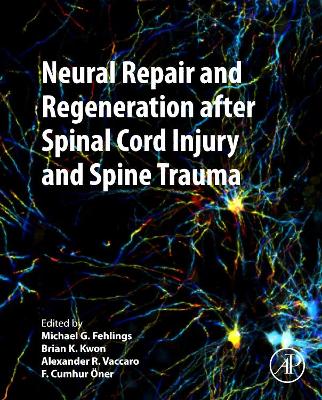 portes grátis
portes grátis
Neural Repair and Regeneration after Spinal Cord Injury and Spine Trauma
Vaccaro, Alexander R.; Kwon, Brian; Oner, F. Cumhur; Fehlings, Michael
Elsevier Science Publishing Co Inc
02/2022
644
Dura
Inglês
9780128198353
15 a 20 dias
1500
Descrição não disponível.
1. Anatomy (touch on both spine trauma and SCI) 2. Epidemiology 3. Classification Systems: Spine Trauma 4. Classification Systems: SCI 5. Outcome Measures 6. Imaging: Spine Trauma 7. Imaging: SCI (include advanced imaging techniques) 8. Intraoperative imaging and Image Guidance 9. Spine Trauma Management Issues: Upper C-spine 10. Spine Trauma Management Issues: C-spine 11. Spine Trauma Management Issues: Thoracic and Lumbar 12. Spine Trauma Management Issues: Sacrum 13. Spine Trauma Management Issues: Polytrauma 14. Spine Trauma Management Issues: Geriatric 15. Spine Trauma- areas of controversy and emerging concepts 16. Traumatic Central Cord Injury 17. SCI Management: Pathophysiology 18. SCI Management: Role and Timing of Surgical Intervention 19. SCI Management: ICU Management (including MPSS) + Drugs 20. SCI Management: Rehabilitation 21. SCI Management: Economic Impact 22. Complications 23. Neurochemical Biomarkers of Acute Spinal Cord Injury 24. Clinical Trials: Drugs 25. Clinical Trials: Regenerative Approaches 26. Clinical Trials: Rehabilitation Approaches 27. Translational Perspective: Neuroprotective Strategies for Traumatic Spinal Cord Injury 28. Translational Perspective: Neuroregenerative Strategies for Traumatic Spinal Cord Injury 29. Emerging Concepts in the clinical management of SCI for the future 30. Translational Research in Spinal Cord Injury: What is in the Future?
Este título pertence ao(s) assunto(s) indicados(s). Para ver outros títulos clique no assunto desejado.
3D navigation; A3A4C2 odontoid; Abbreviated Injury Scale (AIS)Damage control orthopedics (DCO)Mean arterial pressure (MAP)Polytrauma; Activity-based therapy; Adverse events; AIS grade; Allogenic; Ambulation; Anatomy; ASIA impairment scale; ASIA; Atlantoaxial dislocation; Autologous; Biomarkers; Biomaterials; Bladder; Blood-brain barrier; Blood-spinal cord barrier; Bowel; Brain-computer interfaces; Burst fracture; C1C2Cervicomedullary; Cardiovascular complications; Cauda equina; Central cord injury; Central cord syndrome; Cerebrospinal fluid; Cervical spine fractures; Cervical spine trauma; Cervical spine; Classification tools; Clinical outcome; Clinical trial; Clinical trials; Combinatorial therapy; Complications; Compression fractures; Corticospinal tract; Cost minimization analysis; Cost-benefit analysis; Cost-utility analysis; Cost-effectiveness analysis; Costs; Craniocervical dislocation; CT; Cytokines; DCM; Deep brain stimulation; Deep venous thrombosis; Degenerative cervical myelopathy; Dens fracture; Disability; DTI; Epidemiology; Excitotoxicity; Flexion-distraction injury; fMRI; Fracture classification; Fracture; Frailty index; Frame-based stereotaxis; Frankel scale; Functional electrical stimulation (FES)Regeneration; Functional recovery; Geriatric; Hangman's fracture; Health economics; Image-guided surgery; Imaging biomarkers; Imaging outcomes; Immunological modulation; Incidence; Incomplete spinal cord injury; Inflammation; Instrument tracking; Intensive care; International standards of neurological classification of spinal cord injury; Intracellular sigma peptide; Intraoperative computer-assisted navigation; Ionic imbalance; ISNCSCI; Lumbopelvic; Magnetic resonance imaging; Management guidelines; Management; Minimally invasive surgery; Modified Japanese Orthopaedic Association scale; MRI; MRS; Natural history; Neural repair; Neurocritical care; Neurological impairment; Neurological outcome; Neuromodulation; Neuroprotection; Neuroregeneration; Neurorehabilitation; Neurosurgery; Neurotrauma; Nurick scale; Occipital condyle; Operative management; Osteoporosis; Outcome assessment; Outcomes; Pathophysiology; Pelvis fracture; Pelvis trauma; Pelvis; Peripheral nervous system; Pharmacotherapy; Prevalence; PROMs; Quantitative MRI; Recovery; Regeneration; Rehabilitation; Respiratory complications; Sacral fractures; Sacrum; SCI classification systems; SCI; Secondary biophysical benefits; Secondary health conditions; Serum; Small molecules; Spinal classification systems; Spinal cord injuries; Spinal cord injury (SCI)Spinal cord injury (SCI)Stem cells; Spinal cord injury; Spinal cord; Spinal decompression; Spinal orthosis; Spinal stenosis; Spinal trauma; Spine fracture classification; Spine fracture; Spine trauma; Spinopelvic; Spondylosis; Stem cells; Subaxial injuries; Surgical decompression; Surgical intervention; Surgical timing; Thoracolumbar spine; Thoracolumbar trauma; Thoracolumbar; Time of spine; Transcranial magnetic stimulation; Transverse ligament; Traumatic SCI (tSCI)Treatment; Upper cervical injuries; Vascular disruption; Vasopressors; Ventilation; Vertebrae; Vertebral artery; X-ray
1. Anatomy (touch on both spine trauma and SCI) 2. Epidemiology 3. Classification Systems: Spine Trauma 4. Classification Systems: SCI 5. Outcome Measures 6. Imaging: Spine Trauma 7. Imaging: SCI (include advanced imaging techniques) 8. Intraoperative imaging and Image Guidance 9. Spine Trauma Management Issues: Upper C-spine 10. Spine Trauma Management Issues: C-spine 11. Spine Trauma Management Issues: Thoracic and Lumbar 12. Spine Trauma Management Issues: Sacrum 13. Spine Trauma Management Issues: Polytrauma 14. Spine Trauma Management Issues: Geriatric 15. Spine Trauma- areas of controversy and emerging concepts 16. Traumatic Central Cord Injury 17. SCI Management: Pathophysiology 18. SCI Management: Role and Timing of Surgical Intervention 19. SCI Management: ICU Management (including MPSS) + Drugs 20. SCI Management: Rehabilitation 21. SCI Management: Economic Impact 22. Complications 23. Neurochemical Biomarkers of Acute Spinal Cord Injury 24. Clinical Trials: Drugs 25. Clinical Trials: Regenerative Approaches 26. Clinical Trials: Rehabilitation Approaches 27. Translational Perspective: Neuroprotective Strategies for Traumatic Spinal Cord Injury 28. Translational Perspective: Neuroregenerative Strategies for Traumatic Spinal Cord Injury 29. Emerging Concepts in the clinical management of SCI for the future 30. Translational Research in Spinal Cord Injury: What is in the Future?
Este título pertence ao(s) assunto(s) indicados(s). Para ver outros títulos clique no assunto desejado.
3D navigation; A3A4C2 odontoid; Abbreviated Injury Scale (AIS)Damage control orthopedics (DCO)Mean arterial pressure (MAP)Polytrauma; Activity-based therapy; Adverse events; AIS grade; Allogenic; Ambulation; Anatomy; ASIA impairment scale; ASIA; Atlantoaxial dislocation; Autologous; Biomarkers; Biomaterials; Bladder; Blood-brain barrier; Blood-spinal cord barrier; Bowel; Brain-computer interfaces; Burst fracture; C1C2Cervicomedullary; Cardiovascular complications; Cauda equina; Central cord injury; Central cord syndrome; Cerebrospinal fluid; Cervical spine fractures; Cervical spine trauma; Cervical spine; Classification tools; Clinical outcome; Clinical trial; Clinical trials; Combinatorial therapy; Complications; Compression fractures; Corticospinal tract; Cost minimization analysis; Cost-benefit analysis; Cost-utility analysis; Cost-effectiveness analysis; Costs; Craniocervical dislocation; CT; Cytokines; DCM; Deep brain stimulation; Deep venous thrombosis; Degenerative cervical myelopathy; Dens fracture; Disability; DTI; Epidemiology; Excitotoxicity; Flexion-distraction injury; fMRI; Fracture classification; Fracture; Frailty index; Frame-based stereotaxis; Frankel scale; Functional electrical stimulation (FES)Regeneration; Functional recovery; Geriatric; Hangman's fracture; Health economics; Image-guided surgery; Imaging biomarkers; Imaging outcomes; Immunological modulation; Incidence; Incomplete spinal cord injury; Inflammation; Instrument tracking; Intensive care; International standards of neurological classification of spinal cord injury; Intracellular sigma peptide; Intraoperative computer-assisted navigation; Ionic imbalance; ISNCSCI; Lumbopelvic; Magnetic resonance imaging; Management guidelines; Management; Minimally invasive surgery; Modified Japanese Orthopaedic Association scale; MRI; MRS; Natural history; Neural repair; Neurocritical care; Neurological impairment; Neurological outcome; Neuromodulation; Neuroprotection; Neuroregeneration; Neurorehabilitation; Neurosurgery; Neurotrauma; Nurick scale; Occipital condyle; Operative management; Osteoporosis; Outcome assessment; Outcomes; Pathophysiology; Pelvis fracture; Pelvis trauma; Pelvis; Peripheral nervous system; Pharmacotherapy; Prevalence; PROMs; Quantitative MRI; Recovery; Regeneration; Rehabilitation; Respiratory complications; Sacral fractures; Sacrum; SCI classification systems; SCI; Secondary biophysical benefits; Secondary health conditions; Serum; Small molecules; Spinal classification systems; Spinal cord injuries; Spinal cord injury (SCI)Spinal cord injury (SCI)Stem cells; Spinal cord injury; Spinal cord; Spinal decompression; Spinal orthosis; Spinal stenosis; Spinal trauma; Spine fracture classification; Spine fracture; Spine trauma; Spinopelvic; Spondylosis; Stem cells; Subaxial injuries; Surgical decompression; Surgical intervention; Surgical timing; Thoracolumbar spine; Thoracolumbar trauma; Thoracolumbar; Time of spine; Transcranial magnetic stimulation; Transverse ligament; Traumatic SCI (tSCI)Treatment; Upper cervical injuries; Vascular disruption; Vasopressors; Ventilation; Vertebrae; Vertebral artery; X-ray

